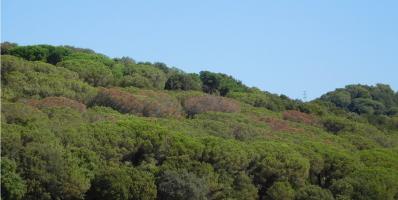IVERdrought
Investigating how intra-individual variability in embolism resistance helps plants to cope with increasing drought
Drought-induced plant mortality is increasing across the world and intra-individual variation (IIV) in embolism resistance (a key driver of plant death) is a likely important, but unknown, factor in the ability of plant species to tolerate and adapt to drought. Recent research has shown that embolisms (air-bubbles that form in the plant water transport system under drought-stress) cause tissue death, highlighting the critical importance of quantifying embolism resistance for understanding drought damage and death. Recently developed, non-invasive techniques to visualise embolism (such as the OVT, the use of optical cameras and light) enable us to quantify how embolism resistance varies within, between and among individuals. Emerging research using the OVT suggests that IIV in embolism resistance is high in the canopies of drought-resistant trees.
Utilising both natural and experimental systems, IVERdrought will investigate the role of IIV in leaf embolism resistance at the species-scale for the first time, and determine how coordination or trade-off’s with other traits may confer species drought resistance. By interpreting key aspects of plant physiology through the lens of ecology, IVERdrought will bridge the gap between these fields, providing a novel and urgently needed assessment of what drives species drought resistance in an increasingly arid world.








